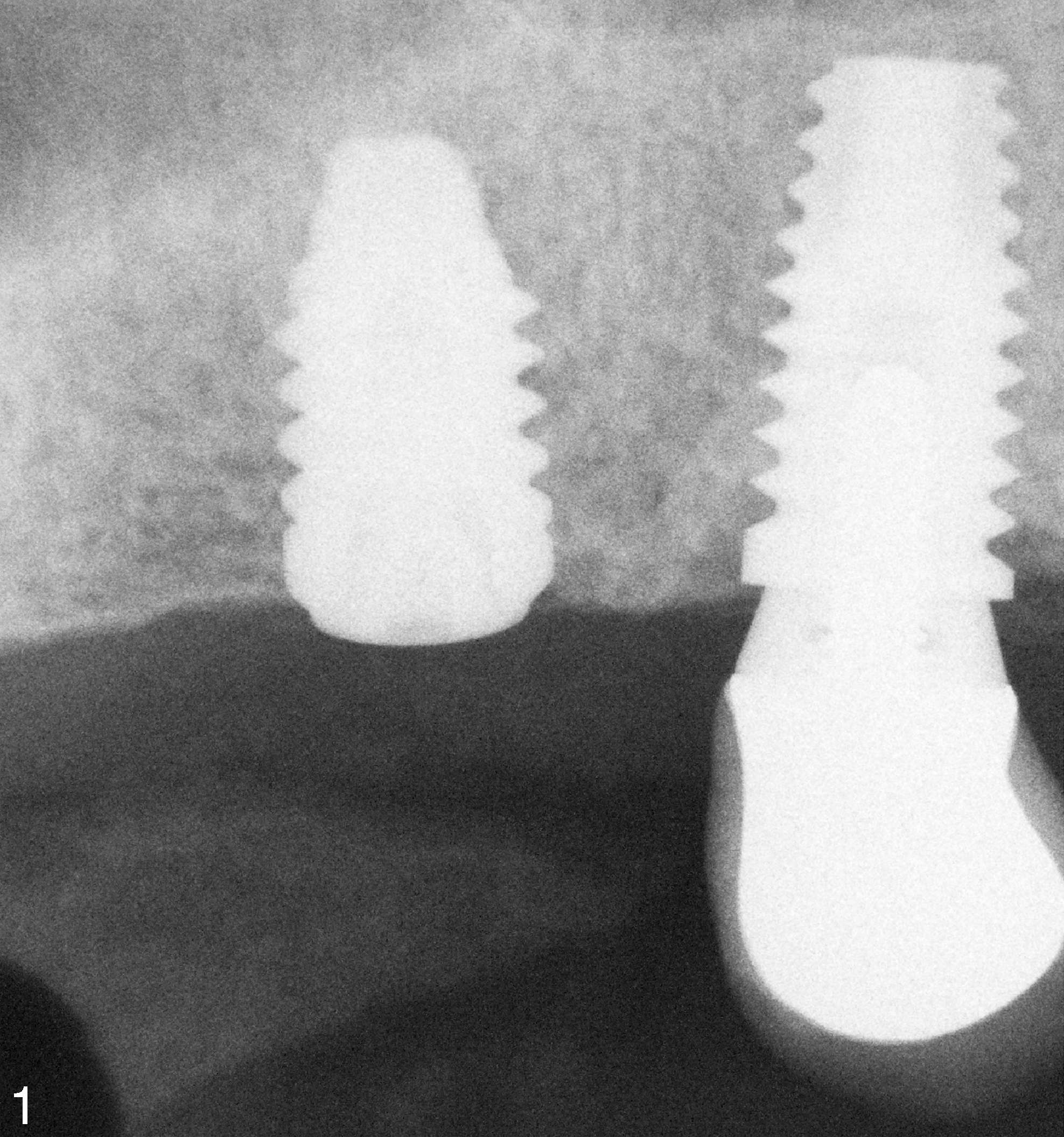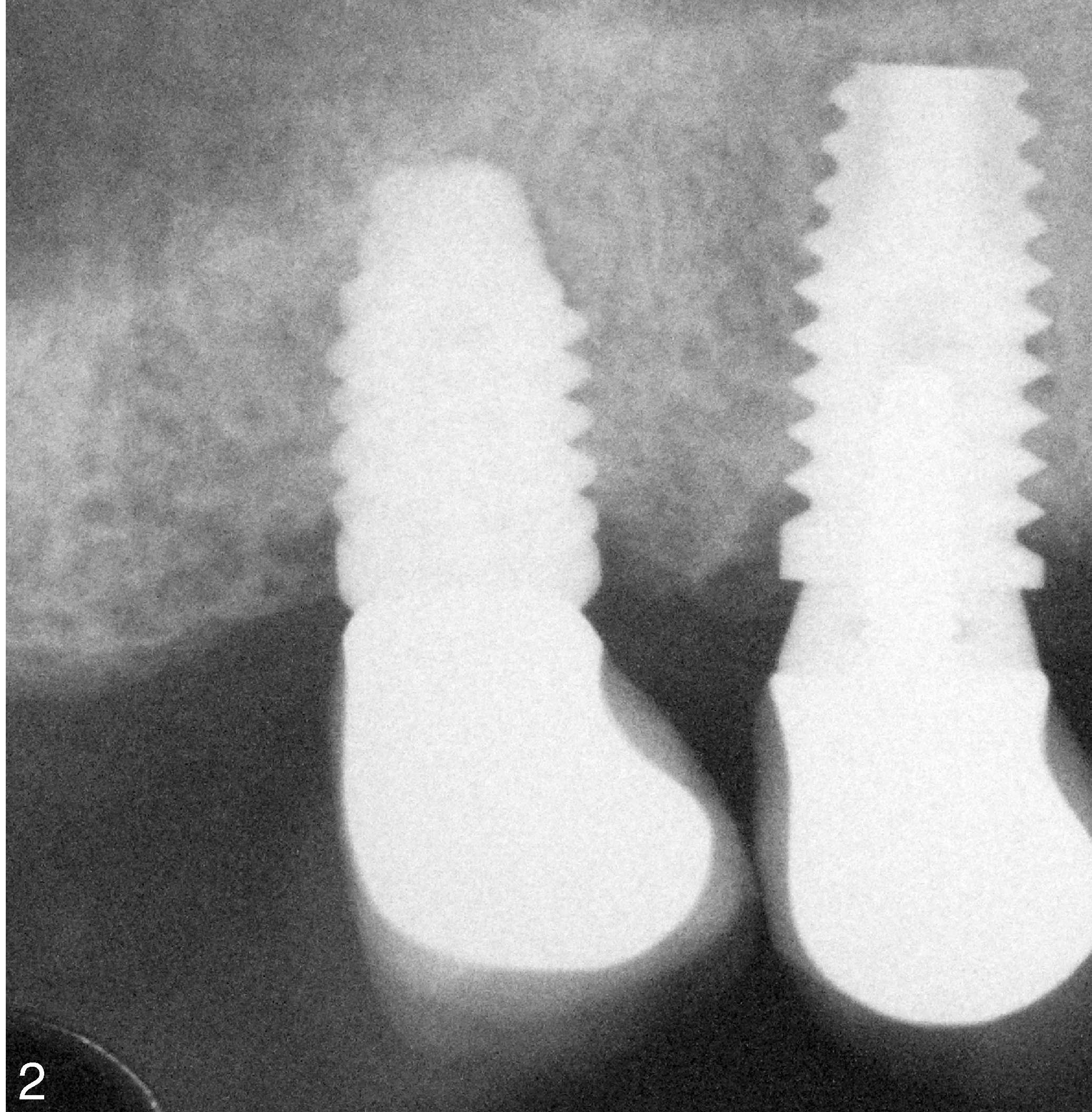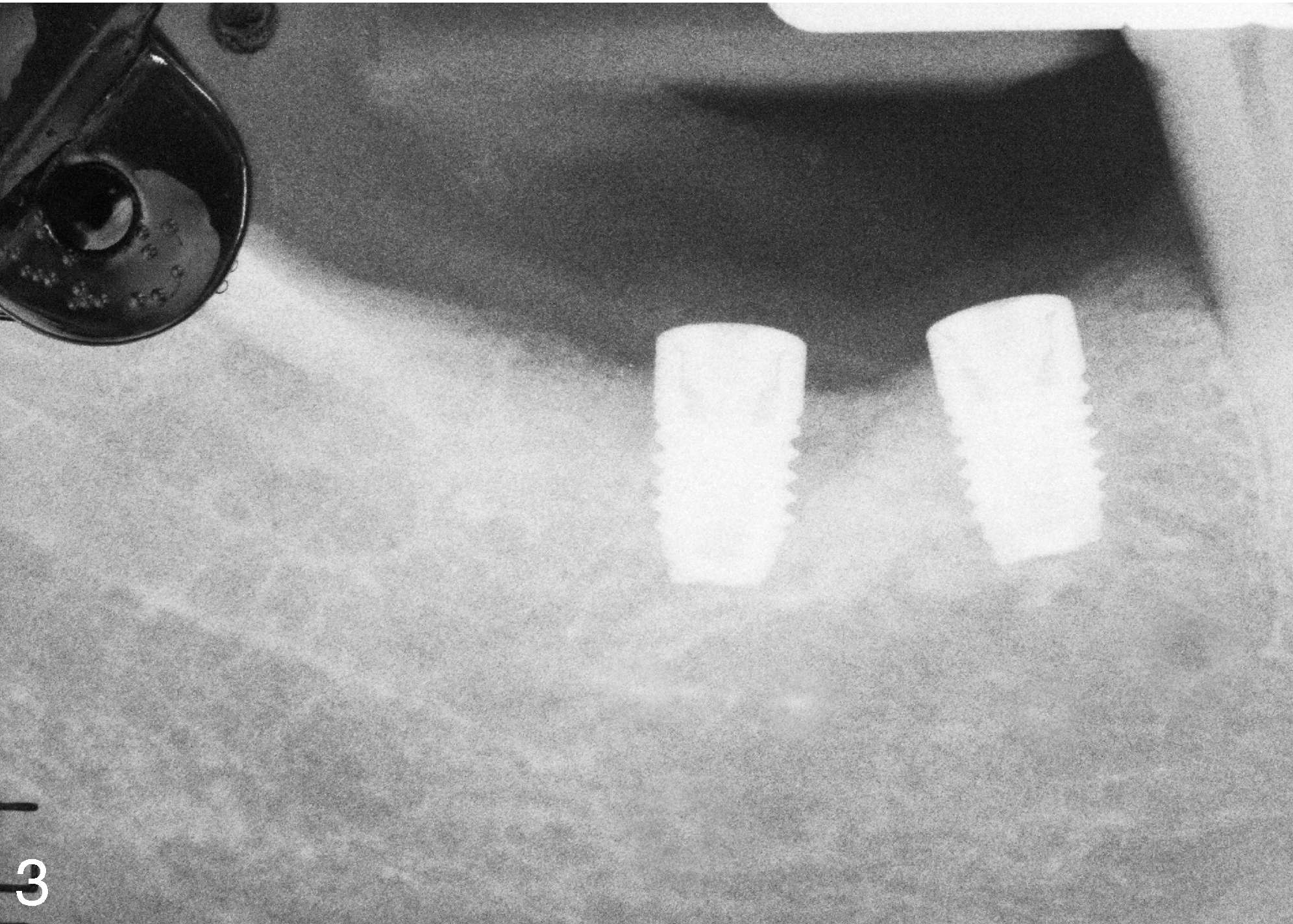Results: Short implants in maxillary and mandibular rehabilitations
Implant length and diameter distribution are shown in Table 1. Table 2 summarizes implant positions and prosthetic characteristics. Mean residual bone height was 6.21 ± 1.05 mm in the upper jaw and 10.73 ± 1.63 mm in the mandible, and it was significantly different between the 2 jaws (P < .05). No surgical or postsurgical complications were reported.
| FDI/ ADA* | Single | Splinted together | Splinted with longer one | Total |
|---|---|---|---|---|
| Mandible | ||||
| 44 (#28) | 1 | 0 | 0 | 1 |
| Anterior | ||||
| 37 (#18) | 0 | 1 | 0 | 1 |
| 36 (#19) | 2 | 2 | 0 | 4 |
| 35 (#20) | 1 | 5 | 0 | 6 |
| 45 (#29) | 0 | 3 | 0 | 3 |
| 46 (#30) | 4 | 3 | 0 | 7 |
| 47 (#31) | 2 | 3 | 0 | 5 |
| Posterior | 9 | 17 | 0 | 26 |
| Total | 10 | 17 | 0 | 27 |
| Maxilla | ||||
| 14(#5) | 1 | 0 | 0 | 1 |
| 23(#11) | 0 | 0 | 1 | 1 |
| 24(#12) | 1 | 0 | 0 | 1 |
| Anterior | ||||
| 17 (#2) | 0 | 0 | 2 | 2 |
| 16 (#3) | 2 | 0 | 3 | 5 |
| 15 (#4) | 1 | 0 | 4 | 5 |
| 25 (#14) | 0 | 0 | 1 | 1 |
| 26 (#14) | 1 | 0 | 4 | 5 |
| 27 (#15) | 0 | 0 | 4 | 4 |
| 28 (#16) | 0 | 0 | 1 | 1 |
| Posterior | 4 | 0 | 19 | 23 |
| Total | 6 | 0 | 20 | 26 |
Overall, cumulative implant survival and success rates were both 100%, and there were no prosthetic or clinical complication. Prosthesis success rate was also 100%.
One year after loading, a mean peri-implant bone loss of 0.71 ± 0.23 mm was recorded; there was no significant difference between mesial and distal measurements (P = .79). Maxillary implants had a mean bone loss of 0.69 ± 0.24 mm (Figures 1 and 2). Mandibular implants had a mean bone loss of 0.73 ± 0.23 mm (Figures 3 and 4). The difference between the 2 jaws was not statistically significant (P = .59).




All single implants were 8.5-mm long; shorter implants were splinted together or splinted with longer implants (10 mm or 11.5 mm, which were excluded from this study). After 1 year, bone loss around single implants and splinted ones was not significantly different (P = .67). Mean bone loss was 0.73 ± 0.23 mm for single implants and 0.70 ± 0.23 mm for splinted implants. No effect of implant abutment characteristics and dimension of platform switching could be evaluated by comparing the 8.5-mm implants with shorter implants in terms of peri-implant bone loss.
The effect on bone resorption of characteristics of the opposing teeth and prosthesis was negligible. Most of the included implants had natural teeth opposing (n = 36); the rest were occluded with teeth-supported prosthesis (n = 6). implant-supported prosthesis (n = 6), or composite restorations or removable prostheses (n = 5). Neither definitive prosthesis material influenced bone loss rate.
Serial posts:
- Abstract: Short implants in maxillary and mandibular rehabilitations
- Introduction: Short implants in maxillary and mandibular rehabilitations
- Materials & methods: Short implants in maxillary and mandibular rehabilitations
- Surgical and prosthetic procedure: Short Implants in Maxillary and Mandibular Rehabilitations
- Clinical and radiological evaluation: Short implants in maxillary and mandibular rehabilitations
- Data analysis: Short implants in maxillary and mandibular rehabilitations
- Analisis data: Implant pendek dalam rehabilitas rahang atas dan rahang bawah
- Results: Short implants in maxillary and mandibular rehabilitations
- Discussion: Short implants in maxillary and mandibular rehabilitations